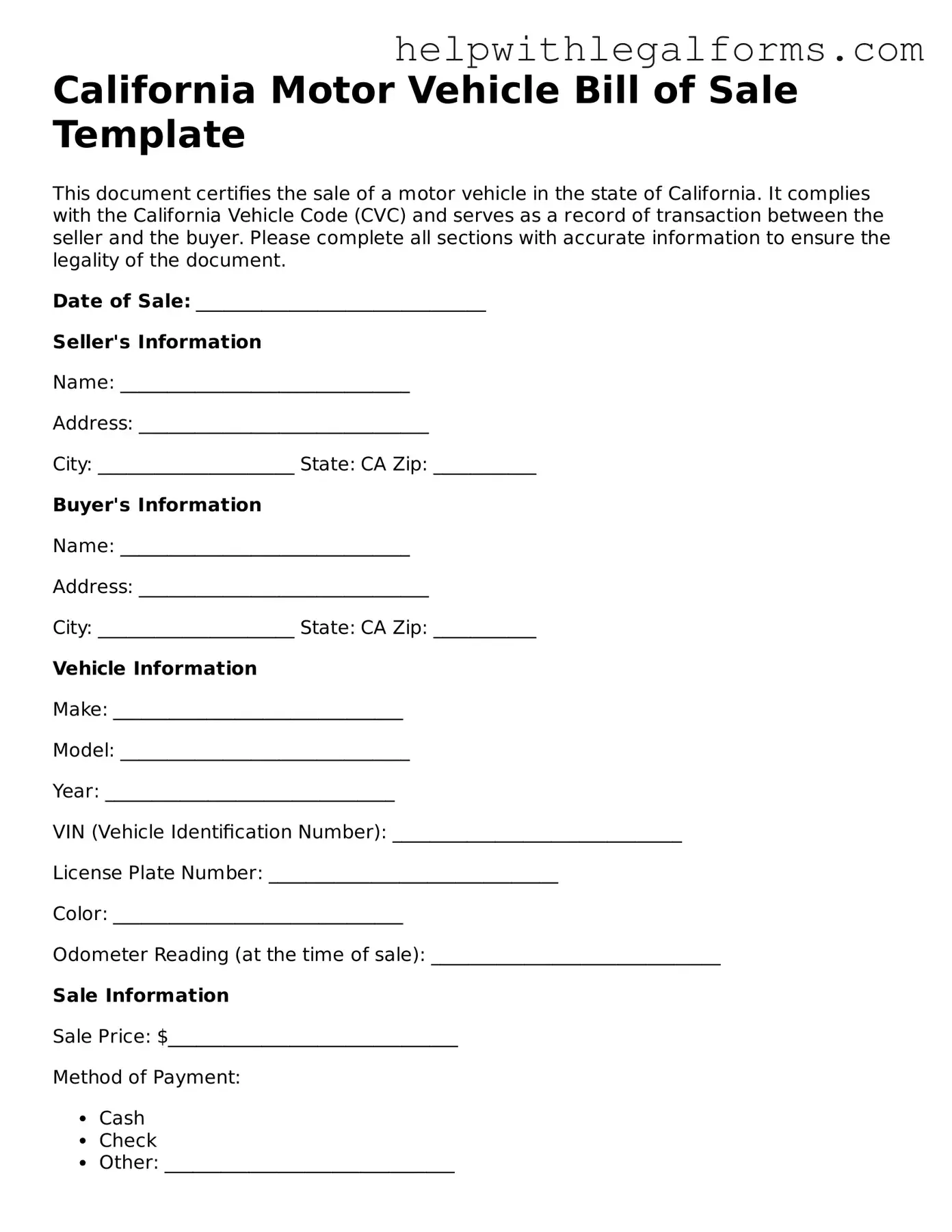California Motor Vehicle Bill of Sale Template
This document certifies the sale of a motor vehicle in the state of California. It complies with the California Vehicle Code (CVC) and serves as a record of transaction between the seller and the buyer. Please complete all sections with accurate information to ensure the legality of the document.
Date of Sale: _______________________________
Seller's Information
Name: _______________________________
Address: _______________________________
City: _____________________ State: CA Zip: ___________
Buyer's Information
Name: _______________________________
Address: _______________________________
City: _____________________ State: CA Zip: ___________
Vehicle Information
Make: _______________________________
Model: _______________________________
Year: _______________________________
VIN (Vehicle Identification Number): _______________________________
License Plate Number: _______________________________
Color: _______________________________
Odometer Reading (at the time of sale): _______________________________
Sale Information
Sale Price: $_______________________________
Method of Payment:
- Cash
- Check
- Other: _______________________________
The seller certifies that the odometer reading listed above is accurate to the best of their knowledge and that the vehicle is sold in "as is" condition, without any warranties expressed or implied. The seller has provided the buyer with all necessary documentation and has informed the buyer about any liens or encumbrances on the vehicle.
The buyer accepts the vehicle in "as is" condition and agrees to the terms of the sale as specified above. The buyer is aware of the vehicle's condition and any disclosed liens or encumbrances.
Signatures
Seller's Signature: _______________________________ Date: _____________________
Buyer's Signature: _______________________________ Date: _____________________
This document is subject to the laws of the state of California and may be used as proof of ownership transfer for registration and other legal purposes. It is recommended to keep copies of this document for both seller's and buyer's records.
